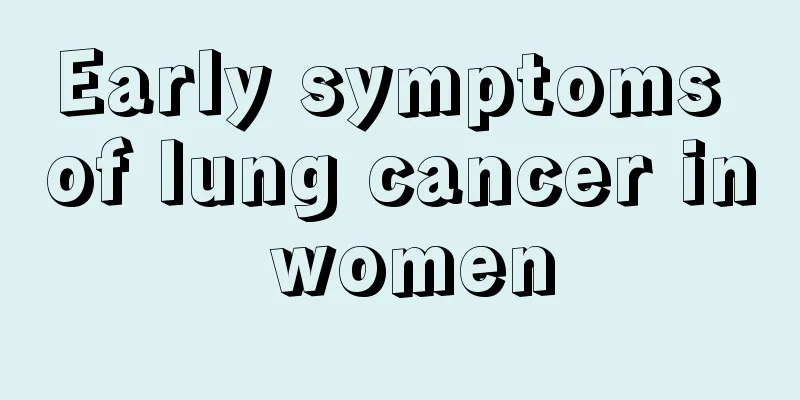What are the specific symptoms of glioma patients

|
In clinical practice, gliomas are often referred to as gliomas. The onset of this disease is relatively obscure. Usually, it takes a long time from the onset of symptoms to attracting attention, ranging from weeks to months to years. Therefore, understanding the symptoms of this disease can play a big role in treatment. So, today I will introduce to you the symptoms of glioma to avoid being confused when the disease occurs and delaying the best time for treatment. 1. Symptoms of gliomas in different locations 1. Midbrain tumor Since the tumor can easily block the aqueduct, symptoms of increased intracranial pressure may appear in the early stage. There are also cases where the first symptoms are mental and intellectual changes, which may be related to the involvement of the reticular formation. 2. Pontine tumor It accounts for more than half of all brainstem tumors and is more common in children. In the early stage, children often present with diplopia and easy falls as the first symptoms; in adults, vertigo and ataxia are often the first symptoms. More than 90% of patients have symptoms of cranial nerve palsy, and about 40% of patients present with abducens nerve palsy as the first symptom. As the tumor develops, cranial nerve damage such as the facial nerve and trigeminal nerve and motor and sensory disorders of the limbs occur. Millard-Gubler syndrome is often manifested - hemilateral pontine damage, including facial nerve cross palsy. If the lesion is located on one side of the lower half of the pons, peripheral facial palsy on the affected side is accompanied by contralateral limb hemiplegia. 3. Medullary tumors The first symptom is often vomiting, which can be easily misdiagnosed as neurotic vomiting or neurosis, especially in adult patients. Patients may experience varying degrees of dizziness and headaches, and then symptoms of posterior cranial nerve palsy may appear earlier, such as difficulty swallowing, choking when eating, nasal speech, and inability to extend the tongue. When the tumor involves both sides, it is due to true delayed syncope. 2. Common symptoms of glioma 1. The eyes cannot look up Due to increased intracranial pressure, the child may develop bilateral esotropia, commonly known as "cross-eyed" or "cross-eyed". Some children may also gradually lose the ability to look upward, which may also indicate the presence of a tumor in the pineal region of the brain. 2. Double vision That is, objects appear double in vision, which is caused by incomplete paralysis of the abducens nerve due to increased intracranial pressure. 3. Head enlargement It often occurs in infants and young children. During this period, the sutures of the skull have not healed or have not healed tightly. The increased intracranial pressure can cause the sutures to separate and increase the head circumference. This type of head enlargement is usually not as obvious as congenital hydrocephalus. 4. Crooked eyes and crooked mouth accompanied by unsteady walking Often suggests the possibility of a brainstem glioma. 5. Impairment of consciousness or mental abnormality Severe disturbance of consciousness (such as coma or semi-coma) is often caused by brain herniation, and children with severe intracranial hypertension may show apathy, fatigue and drowsiness, which need to be paid attention to. Foreign data show that about half of children with brain tumors have personality changes, and about 50% have abnormal behavior. Most of them show dullness, lack of interest in playing, easy fatigue, quietness or irritability. 6. Headache Most headaches are caused by increased intracranial pressure. In a few cases, localized headaches may occur due to direct stimulation of the dura mater by the tumor. Glioma can cause death of patients. For patients, they should have a certain understanding of the disease so that they can clearly understand their physical condition at any time and take corresponding preventive measures. |
<<: What are the early symptoms of glioma
>>: What are the obvious early symptoms of female thyroid cancer
Recommend
Is the success rate of artificial insemination high?
Artificial insemination can be regarded as a very...
Can nasopharyngeal cancer cause facial paralysis?
Can nasopharyngeal cancer cause facial paralysis?...
Can I drink snow chrysanthemum if I have low blood pressure?
Snow chrysanthemum has many benefits, the most co...
Nine things to note when you have frequent acid reflux due to stomach problems
Many people have very good stomachs and have no d...
What are the classifications of laryngeal cancer
It can be classified according to different anato...
Could constant insomnia and dizziness be a sign of brain cancer?
Could constant insomnia and dizziness be a sign o...
Depression test, this set of questions is really accurate
Depression is a more difficult mental illness. My...
Why do I always want to defecate but can’t?
Always wanting to defecate but being unable to do...
What are the two main causes of colon cancer?
What are the two main causes of colorectal cancer...
Can sweat steaming detoxify the face?
In recent years, more and more women have begun t...
What does biting a straw represent in psychology
Compared with other subjects, psychology is a mor...
Movements to relieve fatigue
I believe everyone knows that the competition in ...
Is testicular cancer dangerous?
Is testicular cancer harmful? The number of patie...
How long can you live with vomiting in the late stage of liver cancer? What are the symptoms of late stage liver cancer?
Liver cancer is a malignant tumor disease. This d...
What are the symptoms and characteristics of prostate cancer
Prostate cancer is a very common disease. In rece...









